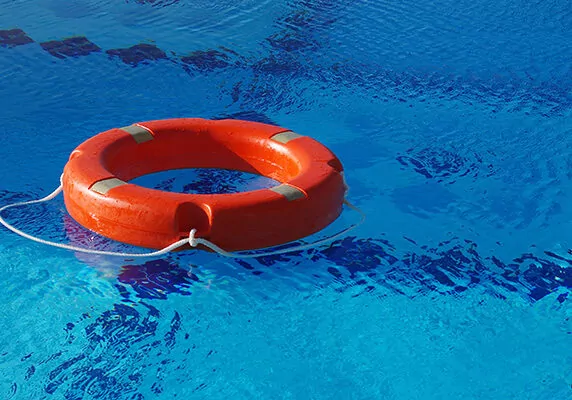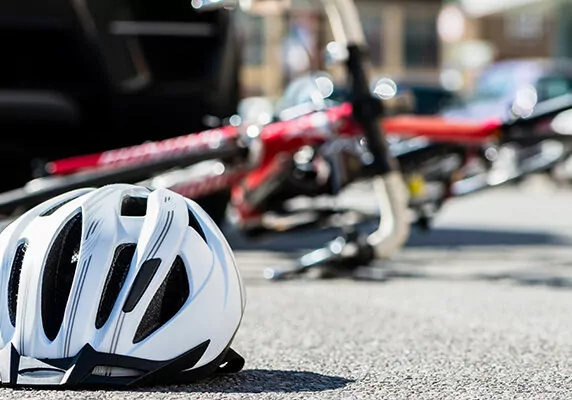California state law mandates that anyone riding a bike under the age of 18 is required to wear a bicycle helmet. California Vehicle Code Section 21212 specifically states that any person under 18 shall:
Wear a properly fitted and fastened bicycle helmet that meets the standards of either the American Society for Testing and Materials (ASTM) or the United States Consumer Product Safety Commission (CPSC), or standards subsequently established by those entities.
By law, in California, those 18 years of age and older are not legally required to wear a bicycle helmet while riding a bike. That said, it is strongly recommended by a number of professionals that you wear a helmet while riding a bicycle, or while operating any two- or four-wheeled street legal mode of transport.
Here is what you should know about wearing a helmet while biking, and why wearing a helmet is critical to riding safely.
Minors under the age of 18 are required by law in California to wear a helmet when biking.
Presently, there are no federal bike helmet laws. These laws are set on the state level. In California, people under 18 years old must wear a helmet while biking. Young children aged 5 and younger who ride as bike passengers (in a bike trailer or stroller) are required by law to wear a helmet.
The youth-helmet law in California applies to minors who ride a bike on a street, bikeway, sidewalk, or public path. The law allows minors to ride a bike without a helmet on private property in California. A number of professionals strongly recommended that minors wear a bike helmet in every situation, even on private property. Children who do wear helmets while biking were found to be 76 percent less likely to be diagnosed with a head injury after a crash compared to bikers not wearing helmets.
Minors who do not wear a helmet and are caught violating the law are subject to a citation or fine up to twenty-five dollars. The parents or legal guardian of the offending minor may be equally liable for the fine amount imposed.
Those 18 years of age and older are not required by law to wear a helmet in California.
Adults in California are not required to wear a helmet while biking. While riding without a helmet is legal, it is more dangerous.
Research shows that, in general, wearing a helmet while riding a bike reduces the likelihood of severe injury, should you crash or otherwise be involved in an accident. Wearing a helmet while cycling reduces the risk of head and brain injuries by about 70 percent. A separate study found that the use of helmets reduced biker fatalities by 34%.
Sharing the road with vehicles can put any cyclist at greater risk of an accident — in 2019 in the U.S., there were more than 800 cyclists fatalities due to traffic collisions. Helmets can reduce the risk of head injury in bicycle collisions with motor vehicles by 74%.
Bike helmets work to protect your head and neck in the event of a crash. Wearing a helmet is a personal choice for adult riders in the state of California. But the truth is that crashes are usually unexpected and often unavoidable. It is best to wear a helmet to protect your head and neck during your bike ride.
Wearing a properly fitted helmet is important. Here is how to size yours.
Improperly fitted helmets offer less protection in the event of a crash. The safest helmet is one that fits secure to your head. Follow the steps below to find a helmet that fits your head:
1 – Size. Using a soft measuring tape, find the circumference of your head. Match the circumference of your head with the circumference indicated on the helmet.
2 – Position. Try the helmet on. The helmet should fit level on your head, about two finger-widths above your eyebrows.
3 – Side straps. Adjust the side straps so the helmet is snug against your head. Make sure to buckle the strap under your chin.
4 – Test it. Now that you have secured the helmet to your head, check that it fits correctly and feels comfortable. Try to move it back and forth and side to side. The helmet should pull down on your head about two fingers worth. If it is too tight or too loose, unbuckle and return to step 2 to achieve the perfect fit.
Helmets have an expiration date because the material they are made from can degrade over time. Note down the expiration date of your helmet and replace it when it is time for a new one. Additionally, if you are involved in a crash, consider replacing the helmet. The helmet may have been damaged, and even have cracks or dents which are not visible.
It is strongly recommended that everyone wear a helmet while biking, regardless of age. Although this is only a legal requirement in California for minors, helmets are suggested for all as they protect your head and neck in the event of a crash and may reduce the likelihood of a severe injury.



